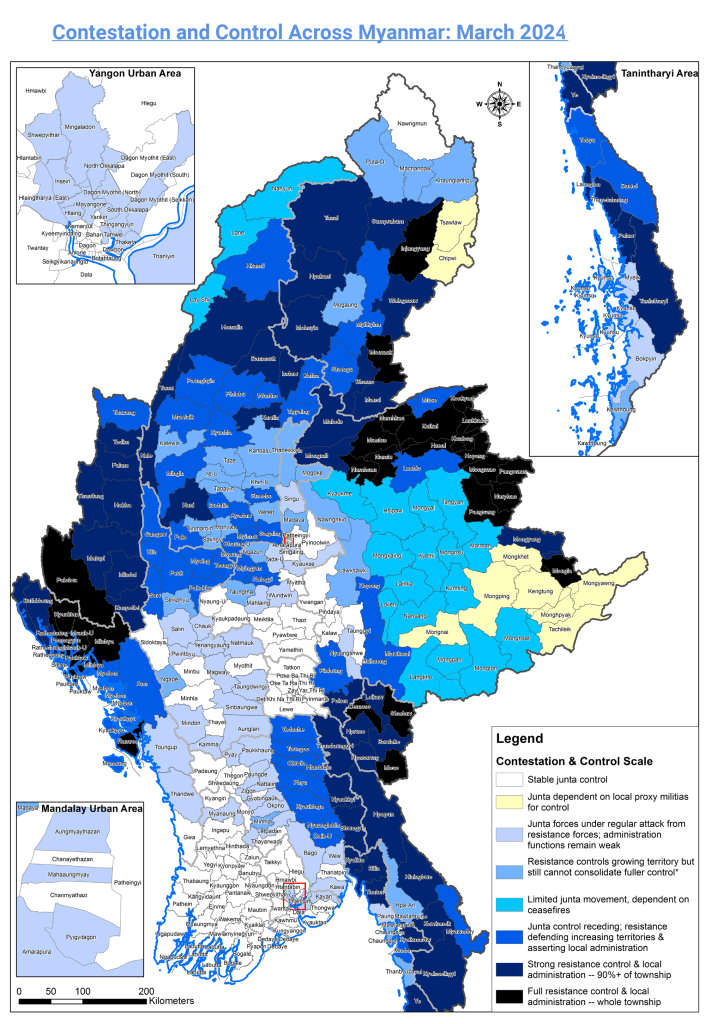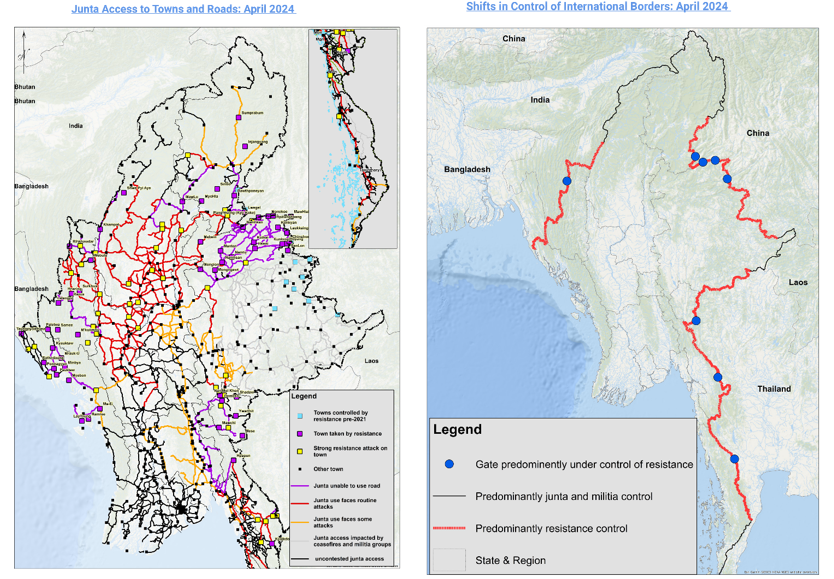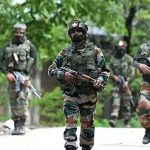Introduction
India and Myanmar share land and sea borders and both countries’ internal politics have a clear-cut impact on each other. The relations between both nations can be explained as a complex history. This can be best understood by appreciating India’s stand towards Myanmar. Myanmar is often referred to as The Gateway or The Bridge to Southeast Asia as it is where China, India and Southeast Asia meet, creating a host of opportunities for various stakeholders. Geographical proximity, cultural and ethnic tradition, shared values and the commonalities of religions have been permanent factors molding relations between India and Myanmar. It holds a crucial geostrategic position and is frequently seen as a buffer state between China and India, the two Asian superpowers. Myanmar’s location at the geographic heart of Southeast Asia and India makes it strategically important for India. Myanmar and Northeastern India share 1,643 Kilometers of open land border. The longest maritime border, i.e. more than 1000 km in the Bay of Bengal, separates the two nations. Myanmar is the only nation where India’s “Act East Policy (AEP)” and “Neighbourhood First Policy” converge.
Situation Post Coup
The year 2024 marks three years since the military in Myanmar overthrew the civilian government, dissolved the parliament, declaring a state of emergency, and arrested prominent political leaders including Nobel laureate, Aung San Suu Kyi. However, the people of Myanmar have challenged the 2021 coup with incessant defiance. The current regime, led by Min Aung Hlaing, faces the opposition of ethnic minorities like Kachin, Chin, Shan etc. who have always opposed the Burmese military state. However, this time, the ethnic group Bamars who have traditionally supported Tatmadaw are also opposing the military Junta rule. Since last three and half years, the characteristic of the country’s conflict has transformed into a nationwide protest engulfing the entire Nation. The military Junta has lost control over 80 townships out of 330 townships and in terms of geography, almost 40-45% in the face of the synchronized and equally armed resistance with overwhelming populace support.[i] A group of townships containing large resistance territories, at the present moment, spans from Myanmar’s eastern border with China in Shan state, across Kachin state in North, through Sagaing region and Chin state bordering India in Western and Southern Myanmar, all the way to the Bay of Bengal. A relatively smaller cluster reaches South from the Eastern border with Thailand in Karenni and Karen states and connects with another cluster of townships with very strong resistance control in Tanintharyi region along the Andaman Sea Coast.

Figure 01[i]

Figure 02[i]
My initial impression of the resistance was that it would fizzle out over time in front of well trained, better equipped and professional military. However, the resistance has grown over with time in terms of peoples’ support and geographical reach. The operation 1027, an operation launched by Three Brotherhood Alliance on October 27, 2023, three Ethnic Armed Organizations (EAOs) combining Taang National Liberation Army (TNLA), Myanmar National Democratic Alliance Army (MNDAA) and Arakan Army (AA), has led to the overrunning of many military Junta strongholds, forcing Myanmar Army soldiers to flee and sometimes taking shelter in neighbouring India and Bangladesh.[i]
The ever-increasing resistance of EAOs and loss of public support has resulted in significant losses of military Junta. The low morale of the troops and continuous onslaught has forced the Myanmar military to defect and surrender. The resistance forces have some important gains in terms of territory. In many places, the entire posts have surrendered or taken shelter in neighbouring India and Bangladesh. Presently in the areas controlled by ethnic groups, the presence of Myanmar military is minimal, and the maximum losses have been post October 2023. The EAOs like Arakan Army (AA) who initially were neutral are now fighting Myanmar Army alongside other EAOs. The huge number of causalities and defection in Tatmadaw has led to dwindling forces ratio vis a vis EAOs. Despite recent efforts of emergency conscription which has forced large population to flee to neighboring countries, Myanmar Army has been unable to fill the gap. The Myanmar military has lost almost 40 percent of its bases and headquarters. Despite superior firepower including air dominance it is loosing territory and owing to its depleted strength, is not able to recapture the lost bases or territory.

Figure 03 & Figure 04 [i]
The various warring factions i.e. EAOs and PDFs are still not fighting completely coordinated resistance against the Myanmar military resulting in uncoordinated efforts. However, National Unity Government (NUG) has tried to establish a joint command but has been successful partially to align with approximately only with 100 odd PDF groups out of almost 500 PDFs presently fighting in Myanmar.[1] This has resulted in fissures. Therefore, the decision point of the resistance hinges upon the synergized efforts against Myanmar military regime. The People Defence Forces (PDFs), with its stronghold in Mandlay, are now gearing up to address the Bamar dominated major towns like Naypyitaw and Yangoon. The coming months will decide the course of Myanmar future.
Stance of Indian Policy
India engages the military junta because of its geopolitical interests in Myanmar and to ensure a stable India-Myanmar border, to maintain and strengthen economic ties to balance the Chinese presence. However, delayed engagement with the pro-democracy resistance forces despite clear imprint of popular pro democratic support gives an impression of diplomatic faux pas. Thus, the latest invite to selected EAOs comprising 17 member delegation fighting against Myanmar military who attended a seminar hosted by Indian Council of World Affairs (ICWA) in November 2024 at New Delhi points to changed stance to fulfill its key strategic objectives and safeguarding its National interest.[2] Since 1990, India has worked with successive Myanmar military regimes, aligning its policy with realpolitik logic. The liberalization of Indian economy ensured enormous opportunities for the Indian foreign policy to set aside the idealism and push for economic and strategic goals. This resulted in working with power center in Myanmar irrespective of its antecedents. The high-profile visits of ministers, diplomats and Indian Army leaders point to strengthened bilateral economy, military and border development.
The Indian mindset to work with Aung San Suu Kyi who India considers the sole flag bearer of democracy in Myanmar has resulted in a vacuum post-2021 coup since the new leadership of the revolution including the National Unity Government (NUG) isn’t much familiar with India and its policy. Although as a policy, India doesn’t interfere with the internal situation of a country, however, the Indian policy needs to align with the existing situation, balancing all stakeholders. The recent losses in Chin and Rakhine states specially in the areas of Indian interest makes it imperative for recalibrating the Indian approach to the developing situation. The frequent interactions with think tanks & academia will be a good balancing act to get more insight of the ground situation.
Way Forward
The NUG needs to mature and work on realpolitik in its dealings with Tatmadaw. Tatmadaw has announced elections in 2025, and country wide census was ongoing till 31st October 2024. Despite the boycott by NUG, PDFs and the UN Population Fund, conveyed its inability to back the 2024 census due to Myanmar strife and conflict.[3] The entire exercise of population census was peaceful, a likely pointer for the conduct of peaceful elections. The winter season will set course for the future. Tatmadaw has regrouped and prepared for multi front offensive to gain lost territory.
The stable Myanmar is of paramount important for India, especially for Northeastern region. The strategic development projects undertaken by India in Myanmar such as KMMTTP for opening an alternative route to Northeastern region and to counter Chinese in roads need to be pushed for early completion. Any slip ups of diplomacy will alienate another friendly neighbour and the vacuum will be filled by the Chinese resulting in far reaching strategic drawbacks.
[1] https://specialadvisorycouncil.org/wp-content/uploads/2024/SAC-M-Effective-Control-in-Myanmar-2024-Update-English.pdf
[2] Kallol Bhattacherjee. Talks with Myanmar Junta and rebels will help find a “Myanmar-led and Myanmar-owned” solution to conflict; MEA. The Hindu, November 07, 2024,
[3] Myanmar’s military government launches a census seen as a way to gather information about opponents. Hindustan Times.
[4] Sreeparna Banarjee. ORF (Observer Research Foundation), Changing balance of power in post-coup Myanmar, October 01, 2024, Raisina Debates
[5] Ibid
[6] https://specialadvisorycouncil.org/wp-content/uploads/2024/SAC-M-Effective-Control-in-Myanmar-2024-Update-English.pdf
[7] Kallol Bhattacherjee. Talks with Myanmar Junta and rebels will help find a “Myanmar-led and Myanmar-owned” solution to conflict; MEA. The Hindu, November 07, 2024,
[8] Myanmar’s military government launches a census seen as a way to gather information about opponents. Hindustan Times.














